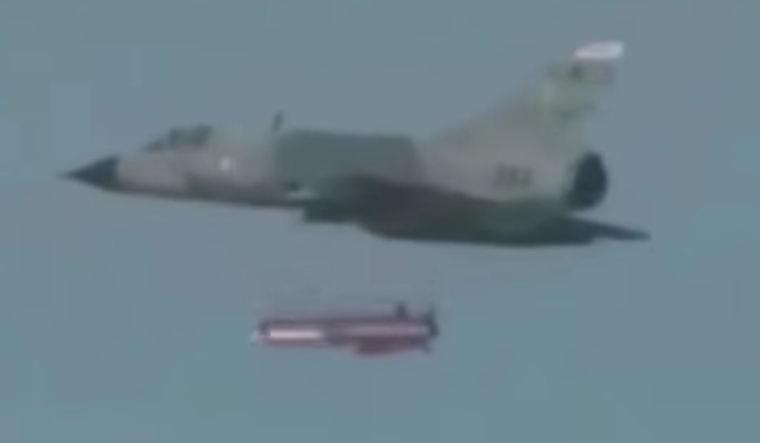The Accountant
PDF THINK TANK: ANALYST

- Joined
- Aug 13, 2016
- Messages
- 8,500
- Reaction score
- 20
- Country
- Location
Yes we can but it is not wise to arm them with PL15.Can we used AWACS to carry PL-15, Babur & RAAD???
Follow along with the video below to see how to install our site as a web app on your home screen.
Note: This feature may not be available in some browsers.

Yes we can but it is not wise to arm them with PL15.Can we used AWACS to carry PL-15, Babur & RAAD???
View attachment 607090
I think it can go further than 600KM, I wouldn't be surprised if after some time a more extended range variant is revealed as per appropriate time. This new system is much beefier than the the first one so I think Mirage may have reached it limitation for being a delivery platform.
I think JH7-B is needed even more so now!

Its range is impressive, potential "range" is even more impressive Nuff said.
LOL no..
i am asking for basic information, which everyone is discussing also. its a headache to search individually on wikipedia or so.




Does it Match the specs of Storm Shadow?The specs of KEPD 350 have been matched without much fanfare - wonder if the JASSM-ER is the new benchmark.
I expect the Raad-II to replace Raad-I on the Mirages and also make it to the JF-17, spreading out the (strategic) strike capability.
The specs of KEPD 350 have been matched without much fanfare - wonder if the JASSM-ER is the new benchmark.


I wish them good luck for this ....By having another IAC operational with Destroyers having Long Range SAMs, they can reach close to this capability



But an ALCM has a lot of speed before launch, which would add to its range. An ALCM launched at high altitude and high speed can achieve a longer range than a similar sized cruise missile launched from standstill. Therefore even with a significant size difference between Raad and Babur...their ranges wouldn't be drastically different(as we see 600km for Raad and 750km I think for Babur).The interesting question would be that if a smaller ALCM can achieve 600km, then what would be the actual range of Babur...

I think JH7 is now an even more mouthwatering prospectI expect the Raad-II to replace Raad-I on the Mirages and also make it to the JF-17, spreading out the (strategic) strike capability.
The specs of KEPD 350 have been matched without much fanfare - wonder if the JASSM-ER is the new benchmark.
 as a carrier of such systems.
as a carrier of such systems. No the JH7B is new development that is undergoing final tests. It should have many structural improvements but not sure about the power plant upgrade.JH7B is very old platform with little utility of maritime strike role ... arming Awacs and MPAs can give you better utility

Three phases:
1. Boost: Should see target, should receive guidance signals.
2. Mid Course: At mid-course phase, the missile comes at the desired trajectory to hit the target, so enemy would know.
3. Terminal: To hit a moving target (like a ship), terminal guidance comes to play at some stage. That could mean an active seeker, not INS nor GPS.
But an ALCM has a lot of speed before launch, which would add to its range. An ALCM launched at high altitude and high speed can achieve a longer range than a similar sized cruise missile launched from standstill. Therefore even with a significant size difference between Raad and Babur...their ranges wouldn't be drastically different(as we see 600km for Raad and 750km I think for Babur).

